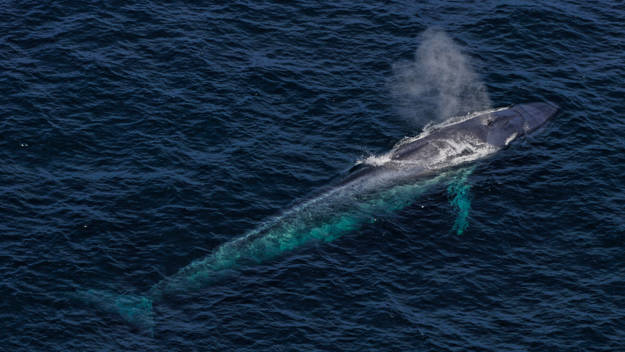You want to learn more about the whales living in the St. Lawrence River? Here are six facts on whales that you probably don't know.
1. The blue whale is the largest known creature to have ever inhabited the planet.
It has even been compared to the size of a Boeing 737 airplane! Impressive, isn't it? The largest blue whale ever observed, was female and found in the Atlantic ocean. It measured 30 meters long and weighed 144 tons.
Other details about the blue whale in a nutshell: its heart is the size of a small sedan car and its tongue can be as heavy as an elephant.
2. The texture of whale milk is similar to toothpaste.
Although surprising, the whale produces milk to feed its young. This is why it is a member of the large family of mammals.
The whale's milk has a concentration of 35 to 50% fat, which makes it very thick, like toothpaste! This consistency allows the milk to pass through water without disintegrating.
3. Whales can hold their breath for at least 20 minutes.
They can do so for a much longer period than most mammals.
Because of the high level of hemoglobin and myoglobin in their bodies, whales can store oxygen in their blood and muscles. This allows them to reduce their heart rate and temporarily shut down certain organs so they tend to use oxygen more slowly!
4. The blowhole of a whale does not discharge seawater.
Do you know what a whale blowhole is? It's the opening at the back or top of the animal's head; its nostril for breathing air in and out. Covered with flaps, the blowhole is not flooded with water when the whale goes underwater.
But what do whales blow through their blowhole? A mixture of bacteria and warm air that, once expelled into a cold environment, condenses into water droplets.
5. Whales do not sleep.
At least not in the same way as other mammals! It is in fact because of their blowhole, discussed above, that whales must stay partially awake in order to control it and activate each breath. Otherwise, they would drown.
To recognize sleeping whales, watch for those that remain motionless in a vertical or horizontal position.
6. Humpback whales sing "complex" songs.
Male humpback whales are capable of emitting a series of beautiful and complex sounds for several minutes, able to repeat it with great precision.
Why do humpback whales sing? This fact remains to be verified but it is suspected that these songs are meant to attract females, which, curiously, have never been recorded singing.




